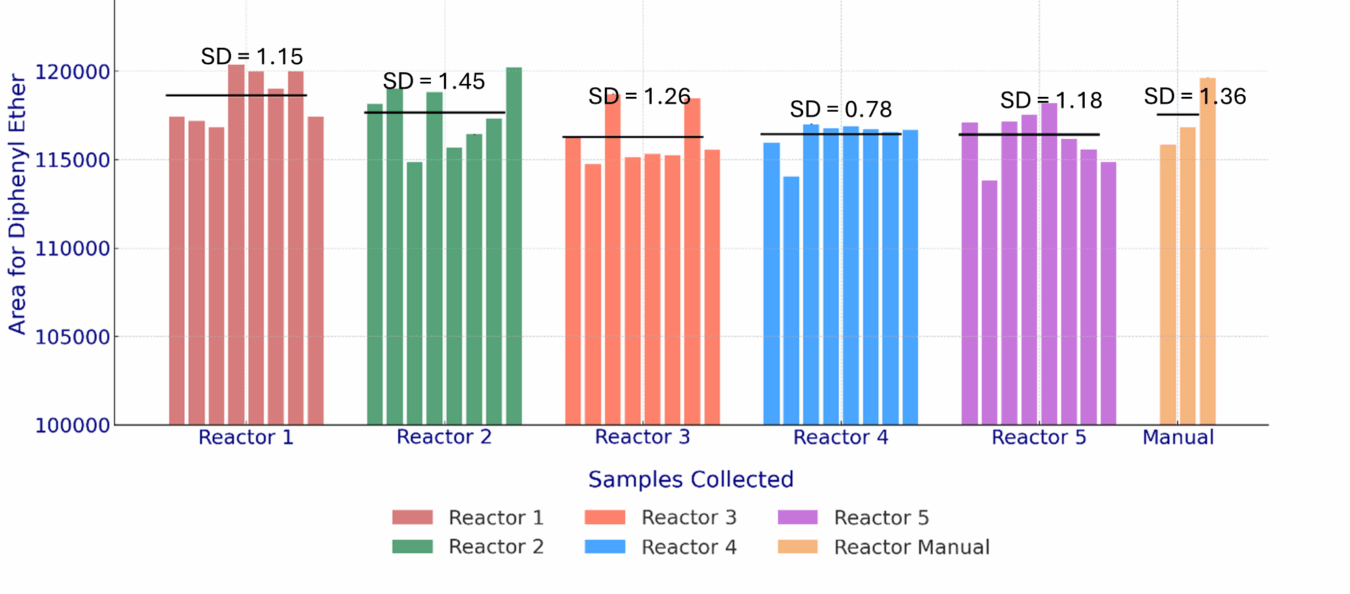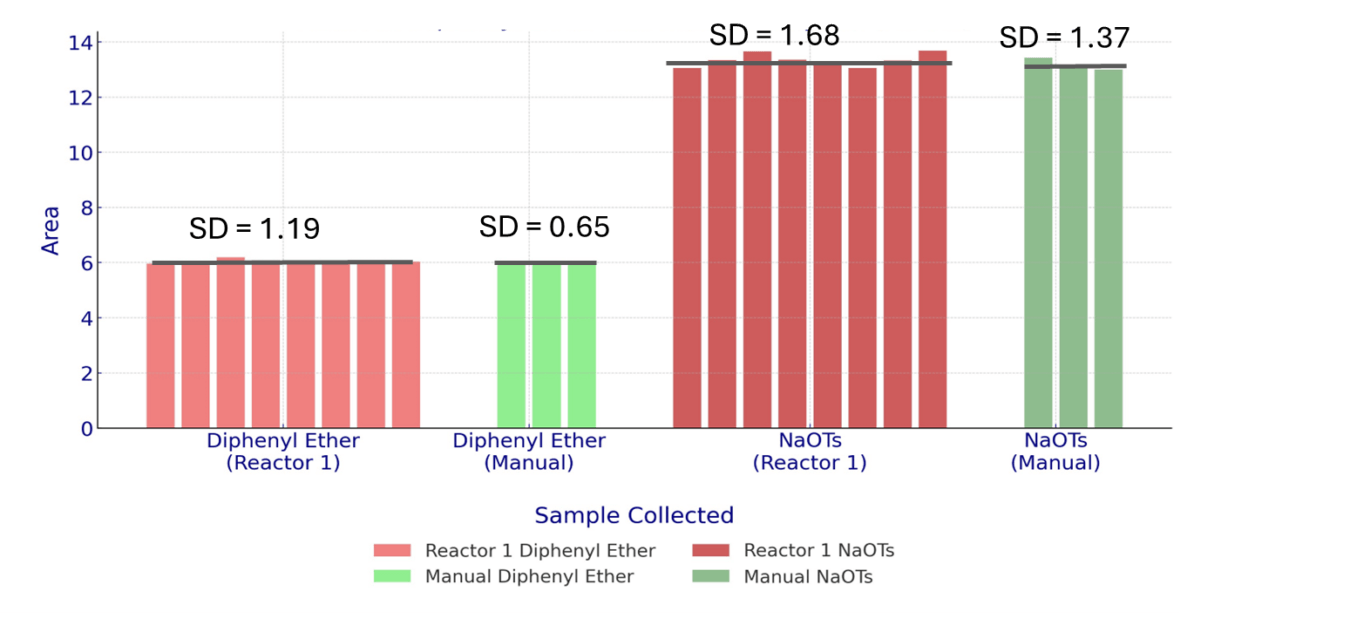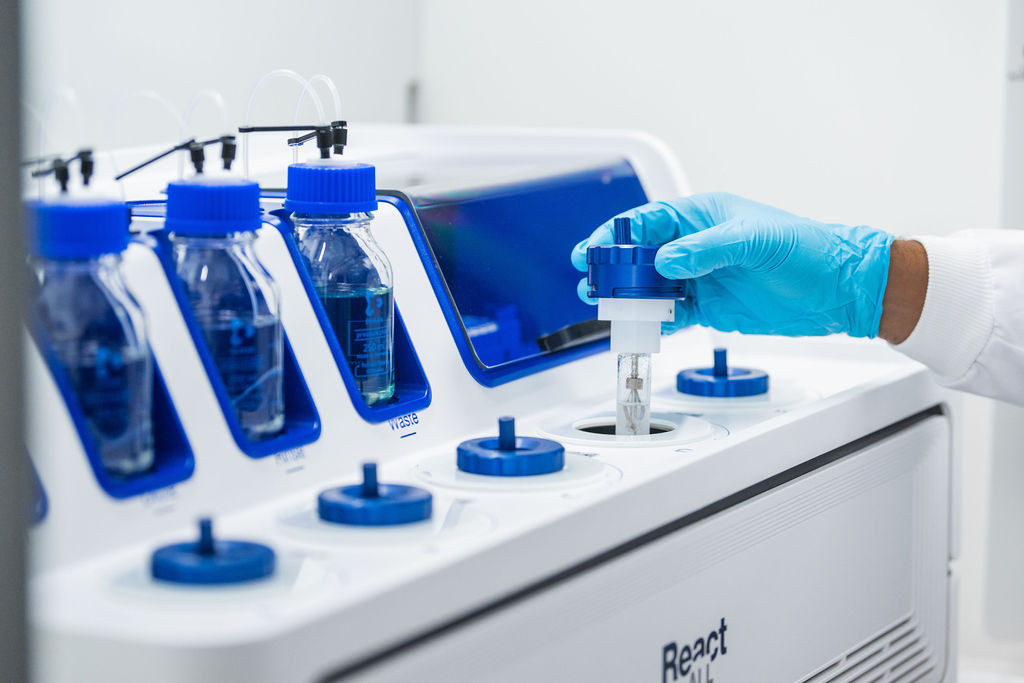Introduction
Reproducible sampling is crucial for accurately representing bulk reactor contents, especially when transitioning from laboratory to industrial scales. The ReactALL™ system, with SmartCap™ technology, automates the sampling, quenching, and dilution process, thus minimizing errors and ensuring consistent sample integrity. This note investigates the reproducibility of sampling for both homogeneous and heterogeneous reactions using ReactALL compared to manual sampling, conducted by Hawkins et al. [1]

SmartCap technology with automated sampling, quenching and diluting process
Experimental
Homogeneous System: A solution of diphenyl ether in acetonitrile was prepared and distributed across five ReactALL reactors. Each reactor was agitated at 500 rpm and maintained at 25°C. Eight automated samples from each reactor were collected and compared to manual samples under identical conditions. All samples were analyzed using UPLC-MS.
Heterogeneous System: A mixture of diphenyl ether and sodium tosylate in toluene was used to test heterogeneous sampling, agitated at 500 rpm and 25°C. The ReactALL system automatically took eight samples, which were diluted and analyzed by HPLC, with solids confirming effective sampling. Manual sampling using a stir bar and pipette yielded comparable results when analyzed by UPLC-MS.
Results
The UPLC-MS analysis showed that the average area counts for diphenyl ether sampled by the automated ReactALL system closely matched those from manual sampling, with residual standard deviations between 0.8% and 1.5%. Manual samples had a similar deviation of 1.4%, confirming the consistent accuracy of the automated system. The data demonstrated minimal variability, reinforcing the precision and reliability of ReactALL in sampling homogeneous mixtures.

Figure 1: Area for Diphenyl Ether from different ReactALL reactors and manual sampling (SD = Standard Deviation) determined by UPLC-MS. Adapted with permission from Org. Process Res. Dev. 2024, 28, 9, 3637–3644. Copyright © 2024 American Chemical Society.
The UPLC-MS analysis of the heterogeneous mixture showed that both diphenyl ether and sodium tosylate had nearly identical area counts between automated and manual sampling. While the standard deviation for sodium tosylate was slightly higher, the ReactALL system effectively sampled both soluble and insoluble components with comparable reproducibility to manual methods.

Figure 2: Area for Diphenyl Ether and Sodium Tosylate from ReactALL reactor and manual sampling. Adapted with permission from Org. Process Res. Dev. 2024, 28, 9, 3637–3644. Copyright © 2024 American Chemical Society.
Conclusion
The ReactALL system demonstrated reliable reproducibility for both homogeneous and heterogeneous systems, closely mirroring manual sampling performance. Automated sampling minimizes human error, ensures sample integrity, and offers a streamlined workflow for chemical reaction screening and optimization, making it a valuable tool for process development.

References
Hawkins, J. M., Pfisterer, D. M., Algera, R. F., & Monfette, S. (2024). The ReactALL Platform: Experimental Data and Case Studies. Organic Process Research & Development. https://doi.org/10.1021/acs.oprd.4c00210
Data and figures are adapted with permission from Org. Process Res. Dev. 2024, 28, 9, 3637–3644. Copyright © 2024 American Chemical Society.
Curious to learn more?
Download the full application note "Ensuring reproducibility with automated sampling".